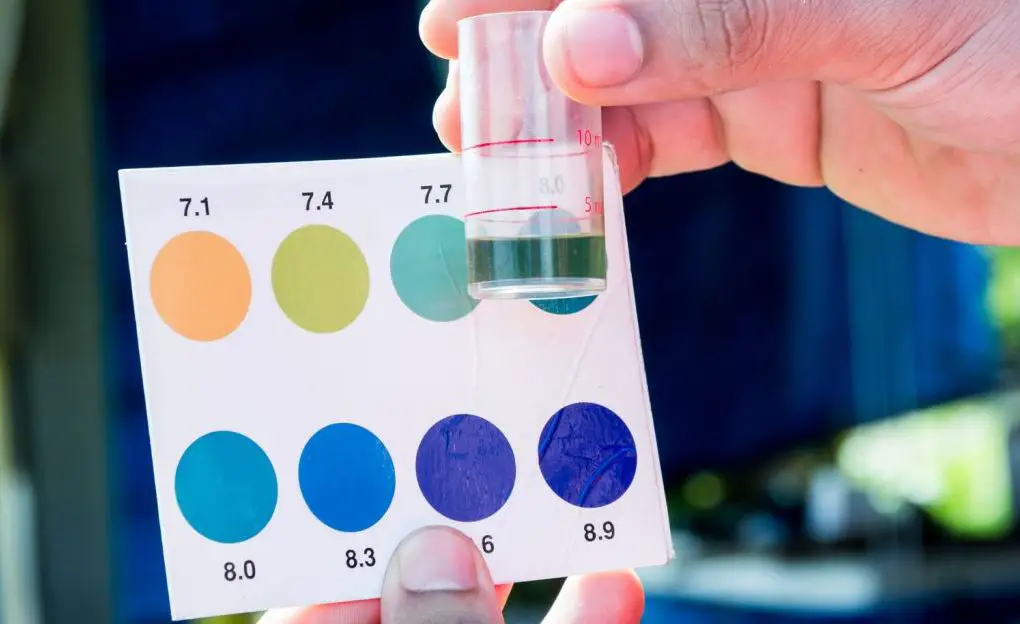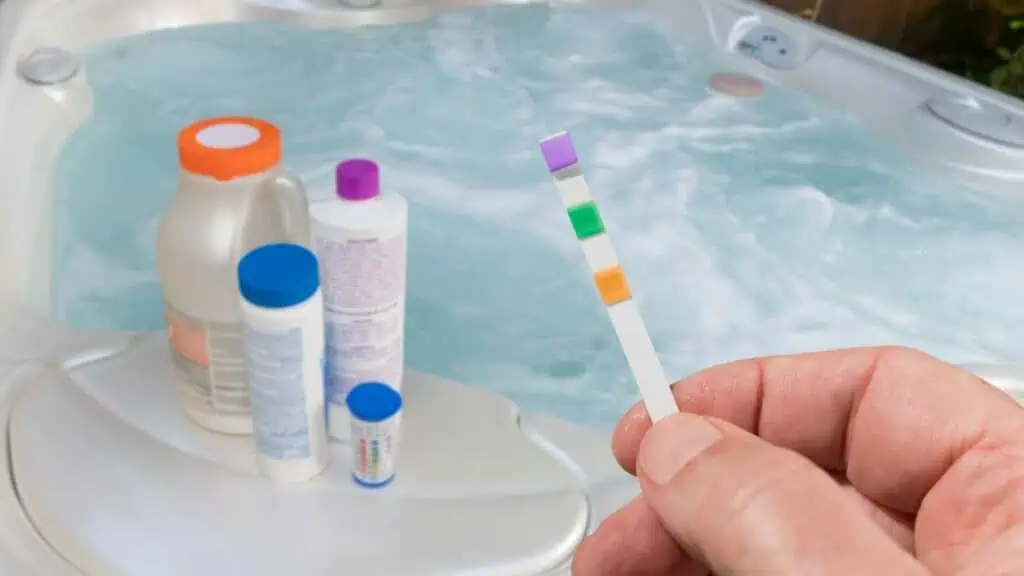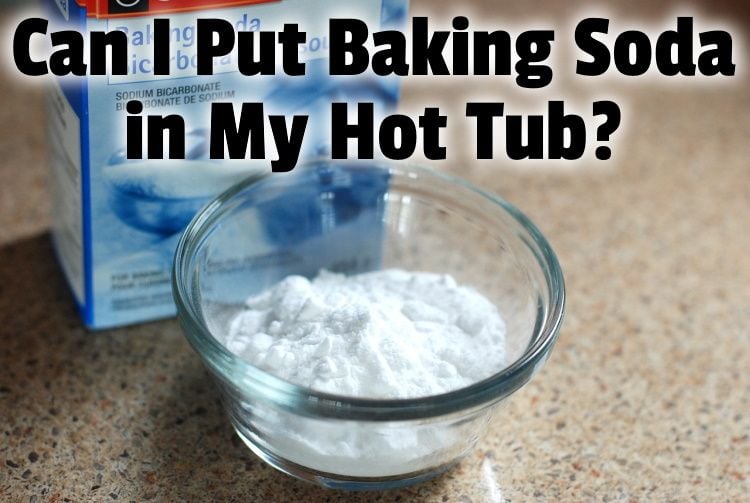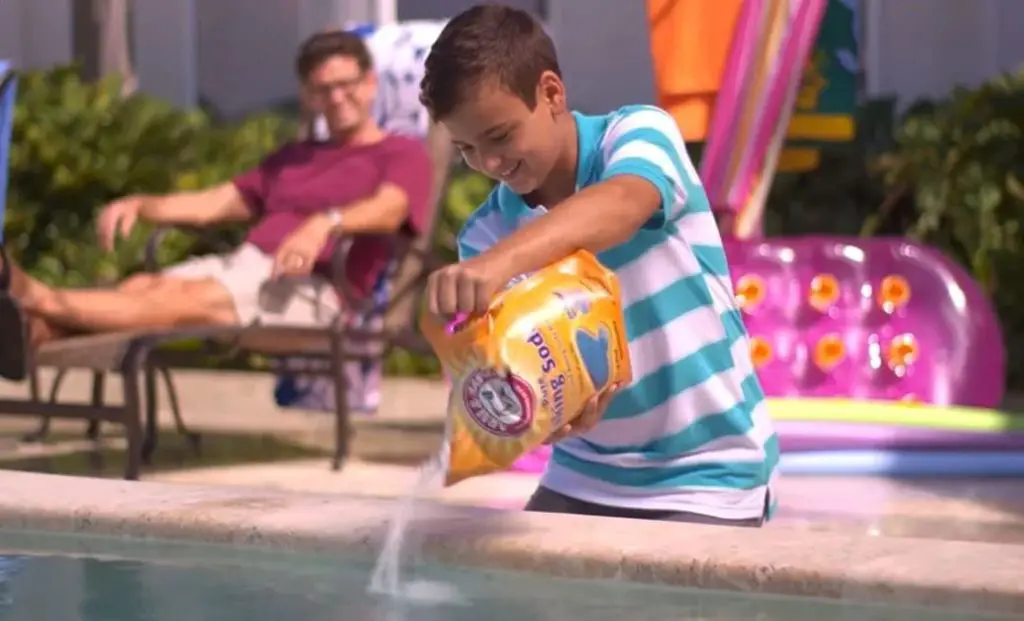
How To Raise Your Pool's Alkalinity with Baking Soda Pool hot tub, Pool supplies, Pool care
Continue reading to learn more. Can You Use Baking Soda To Raise the pH In Your Hot Tub? Yes, you may use baking soda to raise the pH of your hot tub's water. But beware that adding baking soda will increase your water's total alkalinity much more than it will increase your water's pH.

How To Raise Your Pool's Alkalinity with Baking Soda Pool care, Swimming pool maintenance, Pool
To get it to 10 ppm, you'll need roughly 1.2 ounces per 500 gallons (1,893 L) of hot tub water. To be certain of how much you require, use the table above. Pour the solution: Dissolve the calculated amount of soda ash or baking soda in water completely. Add to your hot tub and give the water at least six hours to circulate.

How Much Baking Soda To Raise Alkalinity In A Hot Tub?
Baking soda can work to raise both the alkalinity and pH levels in your hot tub when you add it, but it works better to raise the alkalinity over pH. Your pH levels should stay between 7.2 and 7.8 at all times, and pH levels that are higher mean that your water is too alkaline. If the water is too alkaline, it can cause your hot tub's.

How Much Baking Soda to Raise Alkalinity in Hot Tub?
There are two ways to raise alkalinity in a hot tub: baking soda (sodium bicarbonate) and soda ash (sodium carbonate). Baking soda raises alkalinity levels with minimal effect on the pH. On the other hand, soda ash raises both the alkalinity and pH, so it should only be used if both are low. In this article, you'll learn:

How Much Baking Soda to Raise Alkalinity in Hot Tub 2023 A Comprehensive Guide Fleet Street
Yes. Baking soda can be used as an alkalinity increaser in pools and hot tubs. The main ingredient is Sodium Bicarbonate. But make sure the baking soda you use doesn't have any additional additives. Use 1 tablespoon (17 grams) of baking soda per 100 gallons (379 liters) of water to raise alkalinity by 10 ppm (parts per million).

How Much Sodium Bicarbonate To Raise Alkalinity In Pool?
Mix the baking soda in a bucket with some water from the hot tub and add to the hot tub. Leave the hot tub on for a minimum of an hour and between two and four hours if possible, then retest your alkaline levels. You may need to repeat this process several times to get to the correct pH level.

How Much Sodium Bicarbonate To Raise Alkalinity In Pool?
The best way to raise the alkalinity in a hot tub is to add baking soda or soda ash. First, however, it's crucial to test the water to check all water chemistry levels before adding either raising agent. Then retest the hot tub alkalinity for at least 6 hours before retesting.

How Much Baking Soda to Raise Alkalinity in Hot Tub?
To raise the alkalinity in a hot tub, you should use approximately 1.5 pounds of baking soda per 10,000 gallons of water. However, it's crucial to add it slowly and in small increments, allowing the water to circulate for a few hours before retesting the alkalinity levels.

How Much Baking Soda To Raise Alkalinity In Hot Tub?
It Makes Tub Water Clear As mentioned earlier, your hot tub water can get cloudy in the absence of alkaline chemicals. This is mainly because of chloramine presence as well as the acidic environment allowing for excess ammonia to exist in water.

How To Raise Alkalinity In Hot Tub in 2021 Hot tub equipment, Hot tub, Baking soda water
But, most people don't know about the quantity of baking soda that they need to add into their hot tub to increase the alkalinity. A few tests revealed the following: For an ideal increase, you need to use a tablespoon of baking soda for every hundred gallons of water in the hot tub. While the sizes of hot tubs usually vary, the average medium-sized hot tub is capable of holding around 600.

Can I Put Baking Soda in My Hot Tub? Hot Tub Owner HQ
To raise the pH in a hot tub with baking soda, first test the water pH level. Then, add 1 tablespoon of baking soda at a time, wait 30 minutes, and retest until the pH reaches the desired level (7.2-7.8).

How Much Baking Soda Do You Really Need To Raise Alkalinity In Your Hot Tub? Find Out Now! 🔴
And increasing alkalinity affects pH, which should be between 7.4 and 7.6. Understanding pH Levels and Total Alkalinity in Your Pool You can either have acidic water or basic pool water. The level of how acidic your pool water is is determined by the pH scale. The lower the pH level, the more acidic your water will be.

What Does Baking Soda Do to a Pool? The Pool Mentor
Baking soda is a safe and effective way to increase the alkalinity of the water in your hot tub. It can be added directly to the water and easily dissolved, making it a convenient option for hot tub owners. The recommended amount of baking soda to increase alkalinity in a hot tub is typically around 1 pound per 10,000 gallons of water.

How Much Baking Soda To Raise Alkalinity In A Hot Tub? Home Hacker DIY
Typically, you'll need about 1.2 ounces of baking soda (which is roughly one tablespoon) to raise the alkalinity by 10 ppm for every 500 gallons of water in your hot tub. However, the exact amount may vary based on your tub's size and specific needs. Hot Tub Baking Soda Calculator Enter the volume of your hot tub in gallons:

How Much Baking Soda Should I Put In My Hot Tub to Increase Alkalinity? Blog Post Amano
As a rule of thumb, you should use no more than one tablespoon of baking soda per 100 gallons of water to increase your tub's alkalinity. So for the standard 600-gallon hot tub, you'd only need to use six tablespoons. This article will explain why alkalinity matters, the science behind baking soda's alkalinity increasing power, and step.

How To Raise Alkalinity In Hot Tub Houses & Apartments For Rent
To raise the alkalinity in a hot tub, it's generally recommended to add 1 pound of baking soda for every 10,000 gallons of water. However, it's essential to test the water's pH and alkalinity levels before adding baking soda to ensure that the dosage is accurate. Using a test strip or kit, you can determine the current alkalinity level of.